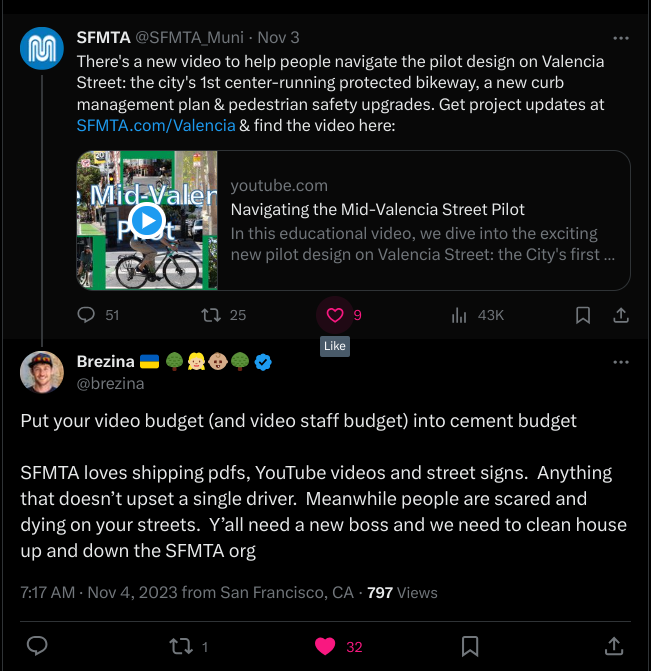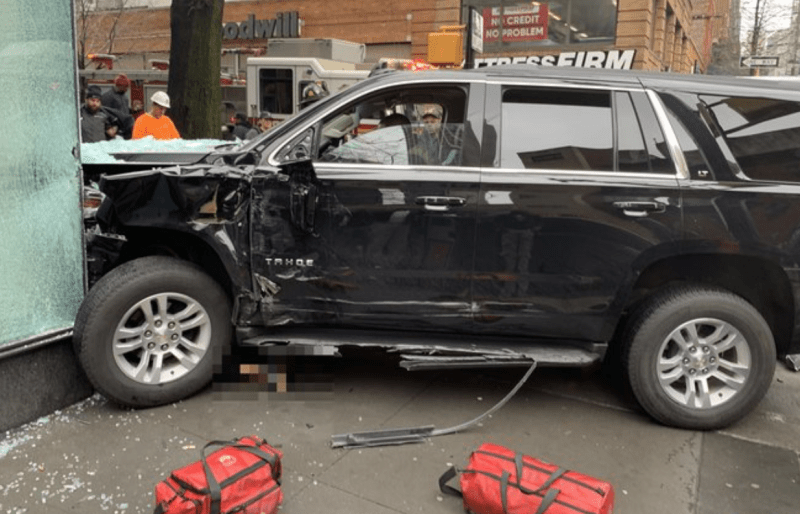More than half of New Yorkers know little or nothing about Vision Zero, and only slightly more than two-thirds support the seven-year-old initiative, even though a whopping 70 percent know someone who has been injured or killed in a vehicle crash, and 79 percent consider such crashes a serious problem in this city.
Those are some conclusions of a new Siena College Research Institute poll taken late last year on behalf of Transportation Alternatives.
The survey found, unsurprisingly, that the city’s working classes and communities of color were more likely to suffer from traffic violence: Overall, 30 percent of polled New Yorkers said they had personally been injured in a crash, a number that starts drifting up among low-income residents (33 percent) and Black residents (35 percent) — the latest indication that road violence affects the most vulnerable New Yorkers more than the wealthy or those historically empowered.
The poll also found that Staten Island — the most car-centric of the five boroughs — registered the most carnage, with 88 percent of respondents knowing someone who was killed or injured in a traffic crash, and 48 percent having been injured in such a crash themselves.
Think about that survey conclusion for a second: Roughly half of everyone on Staten Island has been injured in a traffic crash.
The survey results shed a harsh light on Mayor de Blasio’s seven-year-old Vision Zero strategy, which proposed to eliminate traffic fatalities in the city by 2024, but has failed to get road deaths under 200 per year. According to Department of Transportation statistics, after hitting a trough of 202 traffic deaths citywide in 2018, fatalities rose to 221 in 2019 and again to 243 in 2020. In good years and in bad, there are roughly 220,000 reported car crashes every year in New York City, with roughly 35,000 of them — roughly 95 per day — causing injuries.
NEW poll shows 30% of New Yorkers have been injured in a traffic crash. 70% know someone who’s been injured or killed.
2021 candidates: This violence impacts communities across the 5 boroughs. It cannot be ignored.
Read below for data & takeaways:https://t.co/IySBGnInTt
— Transportation Alternatives (@TransAlt) January 12, 2021
A Streetsblog analysis of city crash statistics, which last year compared the first and second three-year periods of Vision Zero, discovered a basically flat number of fatality-producing crashes and a rising number of injury-producing ones during the first six years of de Blasio’s tenure (2014 through 2019, inclusive). The analysis showed that the growing civilian use of larger vehicles, such as SUVs and light trucks, accounted for the steady or waxing carnage — which the Department of Transportation has acknowledged while doing little to curb the problem.
In the most recent three years of the analysis, the number of fatal crashes dropped only 3 percent. The number of injury-producing crashes, meanwhile, actually rose almost 12 percent, to 187,916 from 168,074. Fewer pedestrians died in the second three-year portion of Mayor de Blasio’s tenure — 383 versus 426. More cyclists and even more motorists died. Injuries rose for all road users. The analysis did not venture into 2020 on account of the traffic anomalies produced by the pandemic.
More than 1,000 vulnerable road users — pedestrians and cyclists — have been killed by drivers during the mayor’s two terms, by TransAlt’s count.
The poll found little recognition of Vision Zero among respondents: Only 48 percent said that they knew “some” or “a lot” about it, as opposed to the 51 percent who knew ”little” or ”nothing.”
This murky record evidently produces skepticism in a sizable faction of New Yorkers. Looking more closely at who does or does not support Vision Zero, the survey found that 17 percent of respondents declared themselves somewhat or strongly opposed to the policy. No shocker, there were gender differences, with 20 percent of men opposed to the policy, while only 15 percent of women were.

So, clearly too many New Yorkers don’t believe that the benefit of zero road deaths outweighs whatever inconvenience or cost they see associated with achieving that goal. Moreover, because the policy plainly hasn’t produced zero road deaths, many residents may think it’s just so much cant. Even safe-streets activists, the broadest constituency for the policy, sometimes lampoon it as “Zero Vision.”
The mayor has defended Vision Zero time and again, although recently he has acknowledged that the pandemic has taken a toll on its execution.
“It’s been a very tough year on so many levels, and it has been a tough year for lives we’ve lost, including the lives we’ve lost on our streets,” he said on Dec. 29, during his daily press briefing. “We know there’s been way too much speeding. We know we have to crack down on that in 2021. We also know that the more life starts to get back to something like normal. The better ability we’ll have to do that, but it’s also, to me, a call to arms that Vision Zero needs to keep expanding rapidly on every front, whether it’s protected bike lanes or, or any type of bike lane, whether it’s enforcement, whether it’s the speed cameras, and obviously we’re going to fight in Albany to get that expansion of the timing of the speed cameras. … So, we have a very aggressive Vision Zero agenda for 2021.”
A mayoral spokesman, Mitch Schwartz, declined to speculate on why some people don’t approve of Vision Zero, given that its goal is to make roadways safe. As for the relative lack of awareness about Vision Zero, he said that perhaps people aren’t aware of the branding, but people certainly do “notice that there are more speed cameras in your community than there used to be. Or bike lanes. Or bus lanes. Or that the speed limit dropped, etc.”
Families for Safe Streets said the survey’s top line — that 30 percent of New Yorkers have been personally injured in a crash and that 70 percent of New Yorkers have been directly touched by road violence — demands a tripling-down on Vision Zero.
“Behind each traffic crash statistic is a devastated parent, child, friend, and community. Today’s poll results prove that far too many New Yorkers have been impacted, and irrevocably damaged, by unsafe streets,” Amy Cohen, the group’s co-founder, said in a statement. “Mothers like me, who lost a child on an unsafe street, are members of a club that nobody should have to join, and we urge our current mayor and those running to succeed him to implement plans that once and for all put an end to the preventable plague of traffic violence.”
Danny Harris, Transportation Alternatives executive director, said the poll should be “yet another wakeup call” for de Blasio “to step up, save lives, and achieve his Vision Zero goals.”
TransAlt and Families for Safe Streets will host Vision Zero Cities “Spring Pop-Up” conference on March 4-5 in part to respond to the rising number of traffic deaths.





